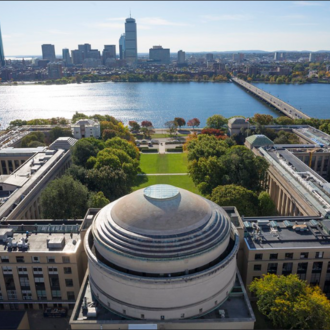MIT Sloan Fellows MBA Program
Leadership
How Organizations Can Fight Racism
By
During MIT’s online vigil on June 3, 2020, members of the Institute community voiced their anger, grief, and determination to lead change in response to the killing of George Floyd and the loss of other Black lives as a result of police brutality and racism. MIT Sloan MBA/MCP candidate and PKG fellow Aiyah Josiah-Faeduwor expressed a sense of urgency, resolve, and optimism shared by many who spoke during the event.
After describing the experience of growing up in the under-resourced, overpoliced community of Dorchester, MA, Josiah-Faeduwor challenged the gathering to make a commitment to advancing racial justice. “Are we all ready to do our individual and collective parts?” he asked. “I’m more hopeful about this than I have ever been, but I am still worried…. The decisions each of us makes over the next few days may impact the fate of our world over the next generations. What will you do today?”
Concrete organizational actions that fight racism
During this week of turmoil, the MIT Sloan Management Review (SMR) has offered business leaders some guidance on how to get started. Headlining its list of must-reads for managers is “U.S. Businesses Must Take Meaningful Action Against Racism.” In this piece for Harvard Business Review (HBR), University of Virginia Professor Laura Morgan Roberts and Georgetown University Professor Ella F. Washington assert that we face a racist pandemic that business leaders must not ignore.
Roberts and Washington point to a growing body of scholarship that tracks the impact of mega-events such as the George Floyd killing on company-level outcomes and the top-down effect on individuals within organizations. “Research shows that how organizations respond to large-scale, diversity-related events that receive significant media attention can either help employees feel psychologically safe or contribute to racial identity threat and mistrust of institutions of authority,” write the coauthors in HBR. “Without adequate support, minority employees are likely to perceive their environments as more interpersonally and institutionally biased against them. Leaders seeking to create an inclusive environment for everyone must find ways to address these topics.”
Dos and don’ts of creating an inclusive environment
Acknowledging that a fear of saying or doing the wrong things often leads people not directly affected by such mega-events to do nothing, Roberts and Washington describe three key missteps.
- Do not keep silent. No one has the perfect words, but leaders must try to convey care and concern in the face of these atrocities.
- Avoid defensiveness. Leaders who try to downplay an injustice or highlight looting that may occur in proximity to protests risk alienating members of targeted groups.
- Steer clear of sweeping generalizations. Even well-intentioned categorizations such as “everybody agrees” and “all of us feel” can crowd out dissenting points of view and the uniqueness of individual experiences.
On the positive side, the coauthors provide a framework for meaningful action by leaders seeking to use their power and platforms to lead change.
- Commit to lifelong learning about racism—and start by acknowledging the harm that your Black and brown coworkers have suffered.
- Continually offer opportunities for reaction, reflection, conversation, growth, and advancement that affirm employees’ rights to safety and personhood.
- Take organization-level actions that demonstrate your firm’s commitment to promote equity and injustice in your organization and community. Roberts and Washington point to the termination of a contract with the Minneapolis Police Department by University of Minnesota President Joan Gabel as one such act.
In concert with voices being raised across the spectrum of our institutions, Roberts and Washington exhort business leaders to take prompt, decisive, and sustainable action to transform the current crisis into lasting progress. “Racism isn’t just Black people’s problem; it’s everyone’s problem because it erodes the fabric of society,” the authors say. “Leaders at every level must use their power, platforms, and resources to help employees and communities overcome these challenges and build a better world for us all.”



